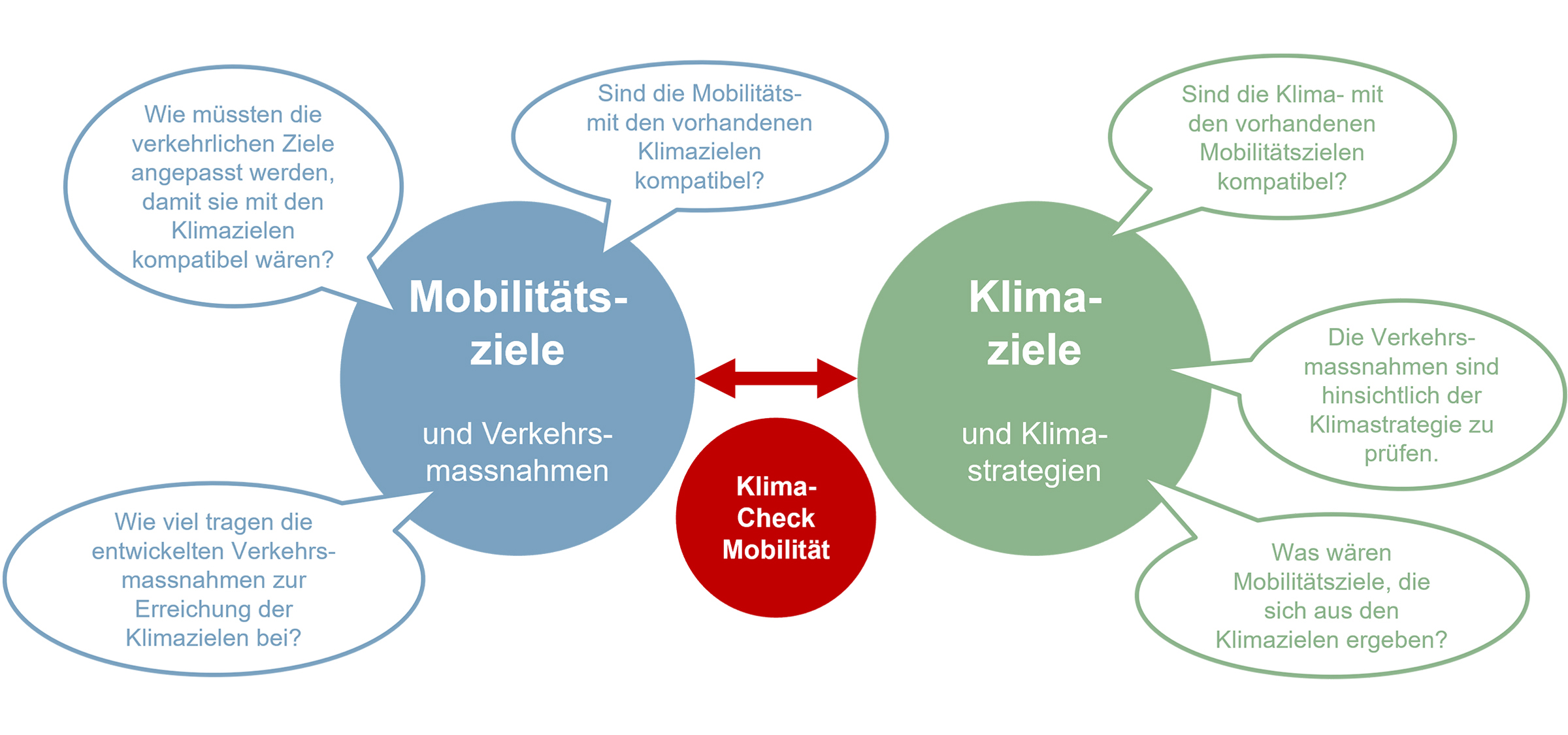Developed by an interdisciplinary team at the interface between mobility and climate, the Mobility Climate Check tool supports discussions and decisions with facts.
Transportation planning today rarely takes climate aspects into account. Traffic targets and measures are often not yet compatible with the goal of net-zero emissions.
To change this, an interdisciplinary team of EBP specialists in transport planning, transport modelling, climate strategies and electromobility developed the Mobility Climate Check tool during an EBP boost camp. We worked together with representatives of the Swiss city of Aarau and the canton of Aargau to identify the challenges at the interface between transportation and climate, thereby deriving the most important needs.
Highlighting the climate impact of transportation measures
The Mobility Climate Check tool shows in a simply and comprehensible way how mobility and climate are interrelated.
We use the tool to check whether transportation goals and climate target are compatible and to assess how individual transportation measures will impact the climate. We feed the most important key figures into the tool, estimate the traffic impact and quantify the associated changes in CO2 emissions.
This makes it possible to quickly prepare clear factsheets on the climate impact of transportation measures. They provide the basis for decision-makers to make informed decisions, such as regarding the direction of transportation policy, individual transportation measures, as well as the alignment of transportation and climate goals.

Essential for achieving climate goals
In the words of Lukas Lanz, EBP’s project manager for climate strategies and electromobility, “We can only achieve Switzerland's climate goals if we take climate impact into account when developing transport plans and concepts.”
We aim to support this connection with our Mobility Climate Check tool. Andrina Pedrett, Team Leader for Transportation and Mobility Planning, sees important areas of application here: “Our tool facilitates a standardized process for taking account of the impact our transportation concepts and strategies will have on the climate.”